Orbital detective story or ExoMars flew away
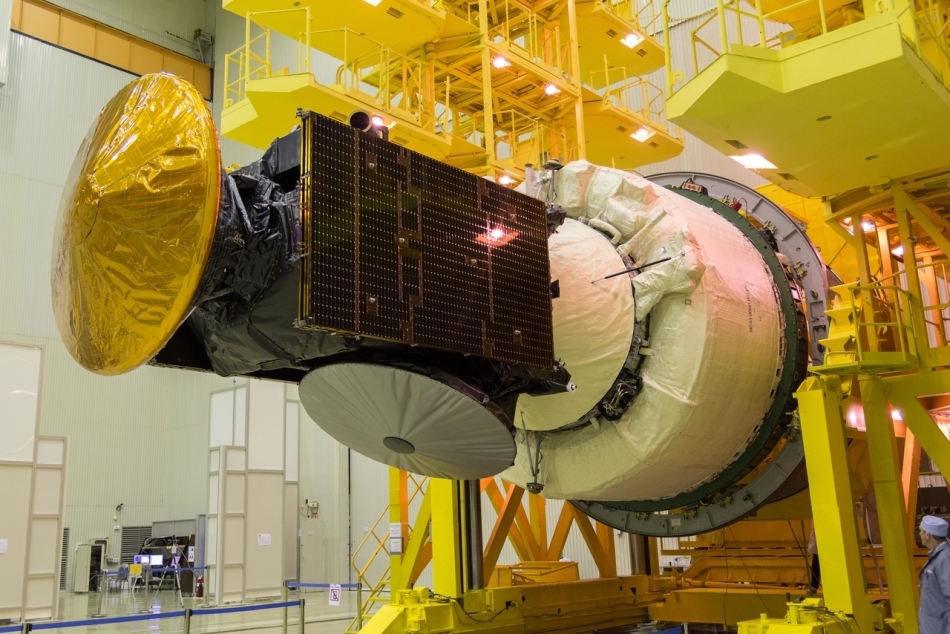
Alas, the exact cyclogram of the launch of "ExoMars" was not published, as is often the case with launches into the geostationary orbit. And, you see, it would be interesting to see a scheme like this , especially since Breeze-M, for the first time in its history, displays the spacecraft on an interplanetary trajectory. But with the help of open information, ingenuity, a space simulator and a small insider, you can not only reconstruct the cyclogram, but also visually see how ExoMars set off and how it will reach its goal.
Initial data
The day before the start it was known that the upper stage would bring the probe to the trajectory to Mars in four stages. Also published the engine start at each stage, and, in principle, even this information could be used. But the final error could have been big, because without the parameters of the orbit it would be easy to make a mistake with the vector and the duration of the acceleration. And on a cosmic scale, Mars is a very small object that you need to aim very carefully at. However, on the night of Monday an article appeared on the ESA website, from which it was possible to pull out the orbit parameters and the position of the active trajectory sections, and of them, in turn, the acceleration vector.
The article explained to readers why the Breeze needed eleven hours to bring ExoMars to the departure trajectory. Two illustrations have been published. The first one showed the flight altitude of the ligament of the probe and the upper stage above the Earth:

')
From this scheme, we can easily see the height of the apocenter after the second and third inclusion.
The second picture showed the projection of the trajectory of the ligament onto the Earth and displayed the active trajectory sections:
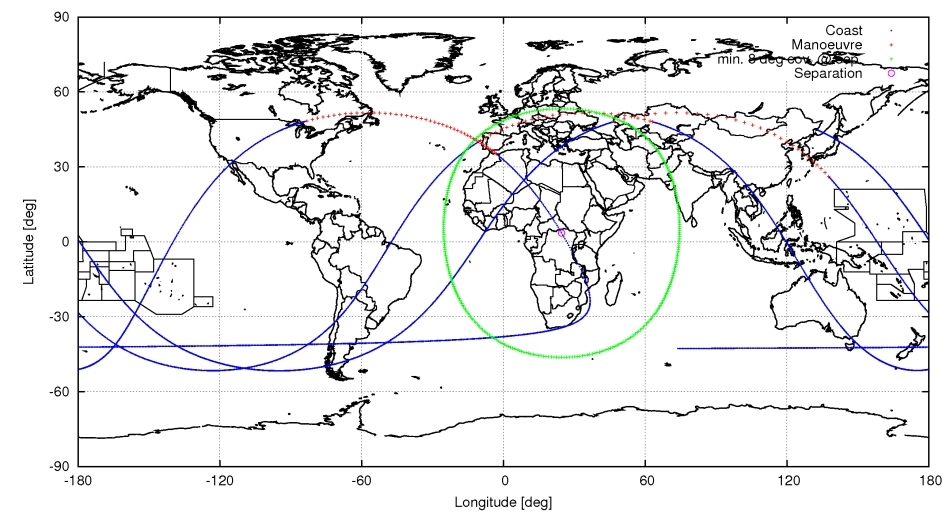
Red areas - engine operation
The article also indicated the height of the circular orbit after the first launch (175 km). And in the report about the removal it was said about the height in the region of 176 km. Well, and finally, on the “Astronautics News” forum, an insider was published, stating that after the second launch, the orbit was 250x5000 km, and after the third - 400x22000 km. Inside perfectly combined with open information from the ESA. Thus, the flight plan is as follows:
- The first inclusion . 12:45 Moscow time to go into a circular orbit with an altitude of 175 km.
- The second inclusion . 14:10, just north of the Caspian Sea, going into orbit with the apocenter 5-6 thousand km.
- The third inclusion . 16:25, over Portugal, going into orbit with an apocenter of 22 thousand km.
- Fourth inclusion . 22:50, over the Great Lakes, and accelerate until the end of the fuel.
On what we fly
The next task is to pick up the device for the flight. Alas, there were no interested fans who would make the finished script with ExoMars, so let's improvise and launch something similar. I honestly killed a few hours trying to transplant the Mars Reconnaisanse Orbiter to “Proton”, but failed - the MRO uses the spacecraft3.dll notation, which without a tambourine does not connect with the closed notation of the Proton LV addon. One could, of course, try to use another “Proton” from another add-on, but there is such a terrible and incorrectly drawn “Breeze” that even it would not be desirable to undertake it.
The mass of the Trace Gas Orbiter and the Schiaparelli landing module is 4,332 kg. A similar mass has a telecommunication satellite Sirius-4. And after I empirically compared their thrust-to-weight ratio and fuel, it turned out that they also almost coincide. Resolved - fly to Mars on a telecommunications satellite for the geostationary orbit :)
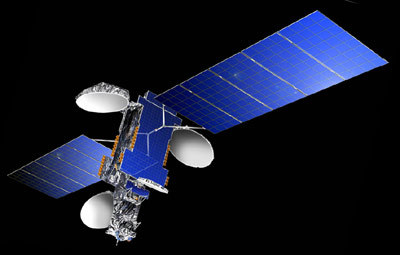
Training
For the flight we need Orbiter itself (the game is officially free, download it for health) and the Proton LV addon. My saved files on the flight stages are available here . When writing the material, I proceeded from the fact that you, at least, read my previous publications about Orbiter, not all actions are described here in steps. While reading this should not create difficulties, but if you want to repeat the flight, then part of the action will have to be done independently.
Fly!
The original Sirius-4 was launched in 2007, but with the help of the script editor (or by opening the saved file), we can easily find ourselves in 2016.
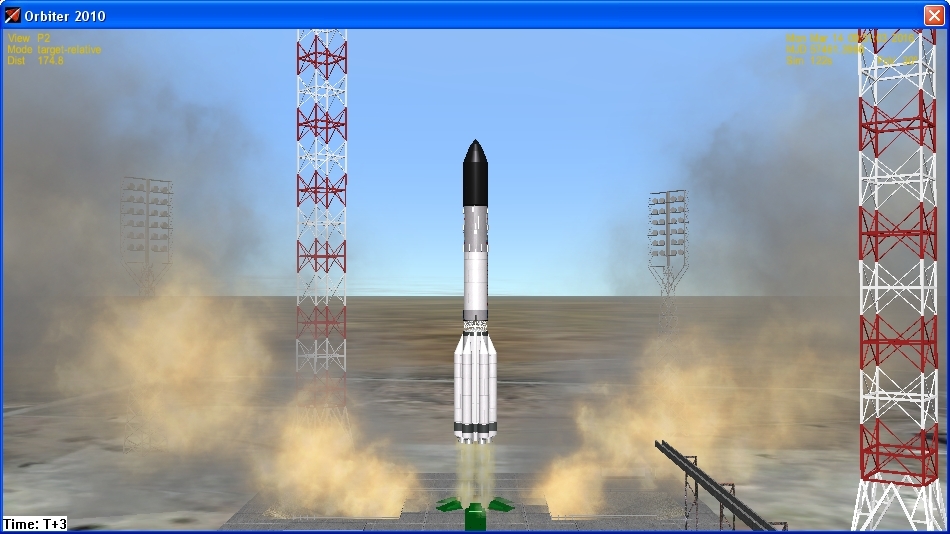
They started almost like in reality, only here the weather is good and there is no frightened magpie:

Reset first stage and adapter. Handsomely!

Separation of the second stage, launch of the third stage:

There is a separation of the upper stage and the "Martian probe."

It's time to stop admiring the beauty and start piloting. First of all, unfortunately, the scheme will not work out exactly. The trajectory of the virtual launch is such that if the Breeze turns on the engines at 12:45, it will fly away not to Mars, but to the Pacific Ocean. In this orbit, 12:45 is already after the apocenter, the mass of the bundle is more than 22 tons, and the thrust of the Briza propulsion engine is only two tons. Traction engine is simply not enough to go into a circular orbit. You may ask - why put on such a trajectory? Everything is simple - it is more profitable to take more fuel and part of it to spend on finishing, than to go into a circular orbit at the third stage and accelerate a much lighter accelerating unit. "Proton" can bring about 23 tons to a low orbit, and so you can take three additional tons of fuel.
We go into a circular orbit, maintaining a pitch angle of about 27 degrees.

There is a stable orbit of 176 km!
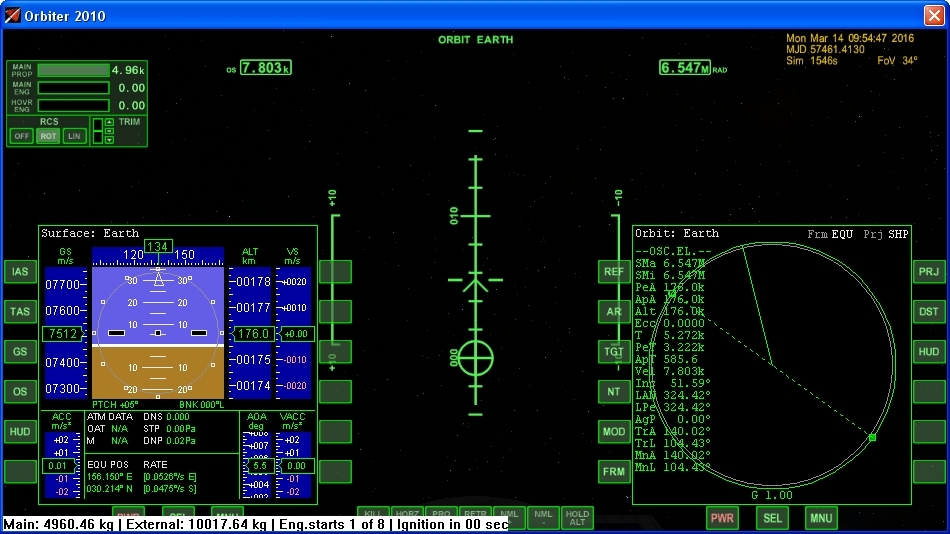
Overclocking
We are preparing for the second power-up; we occupy the position along the orbital velocity vector, the engine starting point is indicated by the arrow:

A small discrepancy has already appeared - it is necessary to start the engine on the map, and even five minutes before the official launch. The acceleration vector is more important, so we start the maneuver earlier.

The main engine does not start immediately, at first small sedimentation engines give little thrust so that the fuel settles at the bottom of the tanks, and the gas bubbles of supercharging float upwards and do not get into the turbo pump.

Apocenter between 5 and 6 thousand kilometers, on the map the position is the same, turn off the engine

Approaching Portugal for the third engine start-up, the time is already 16:27, we began to lag behind the schedule, obviously, the correct apocenter is 5000 km, and not 6000 as in the article.

In reality, the third switch-on lasted until the end of the fuel in the discharged tank. But you and I ran out of fuel when the apocenter is still only 17,500 km. Nothing can be done, reset the tank and turn on the engine again (which was not in real flight).
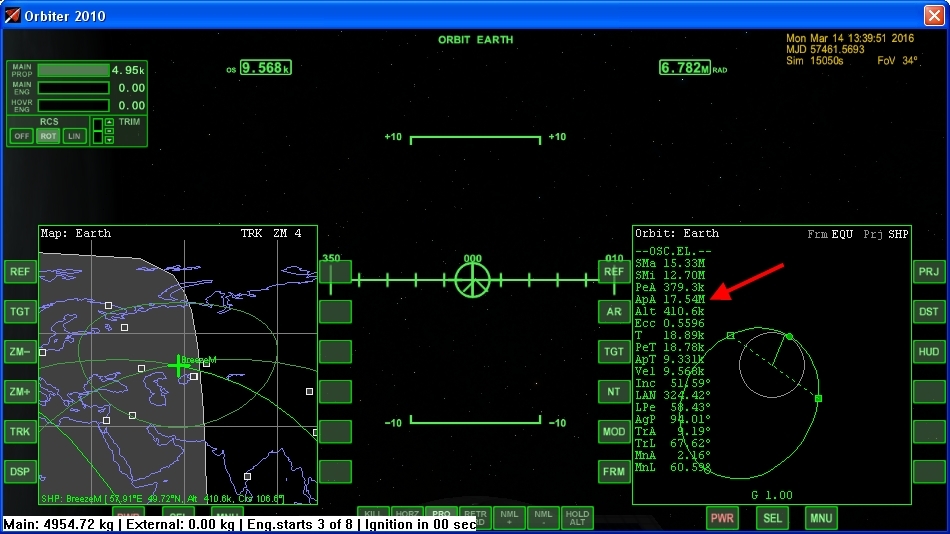
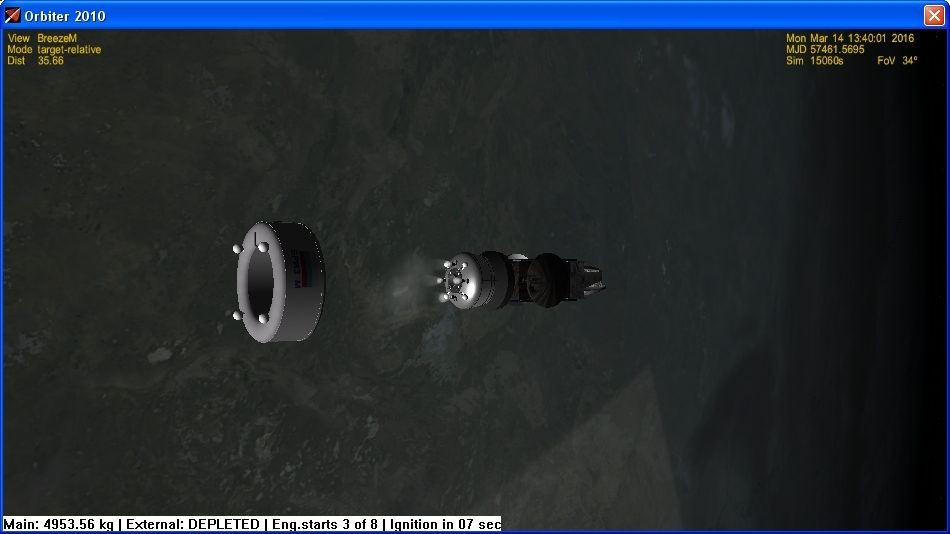
And this is how it would look from Earth. With the usual launch into geostationary orbit, the engine is turned on immediately after the tank is dropped, and this was taken by spotters of satellites. The animation clearly shows the difference in the operation of the deposition engines (wide exhaust) and the main engine.

Apocenter 22 000 km, under us recently passed the Caspian Sea, we are going well on the map. Turn off the engine.

But the real photo from the Earth - flying near ExoMars riding on the "Breeze" and dumped tank

Earth from a height of 22 thousand kilometers
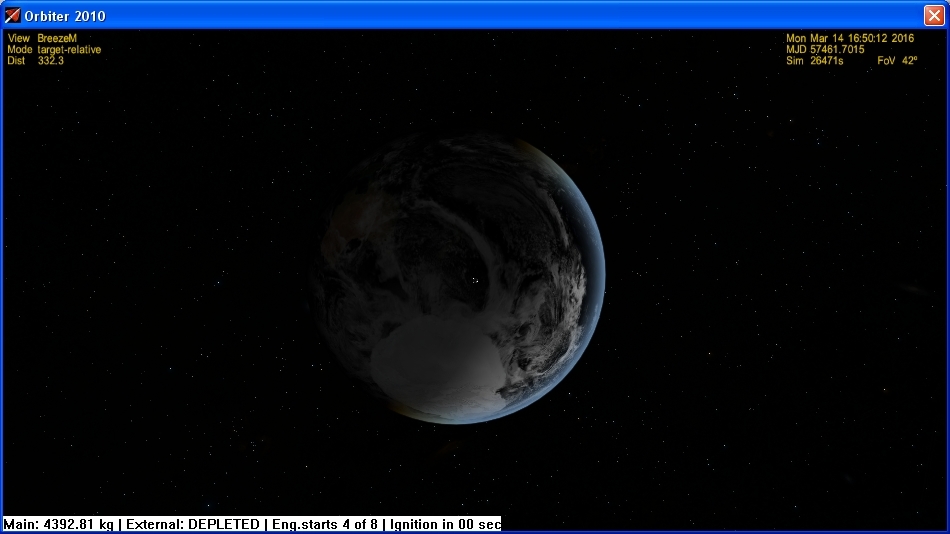
It is already night in Moscow, and we have the fourth inclusion, almost on schedule.
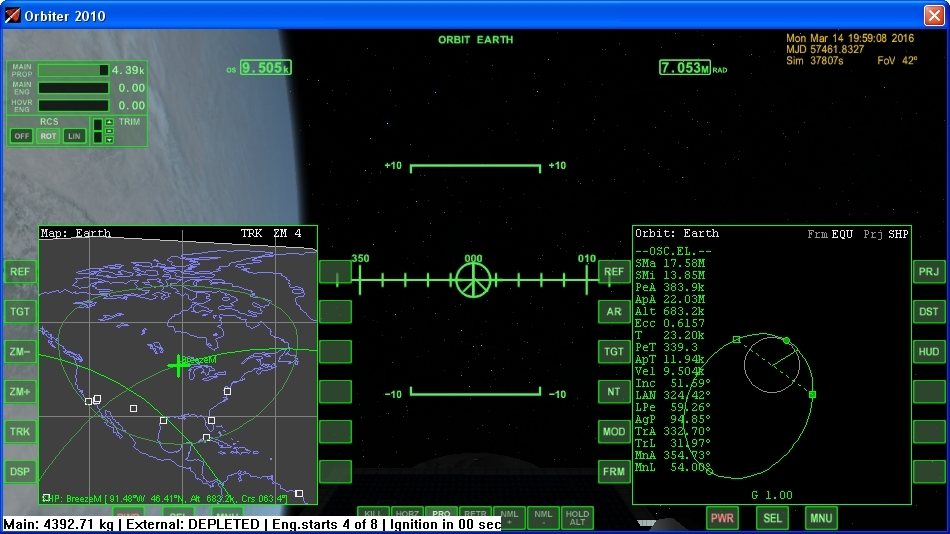
The fuel ran out, but we were able to go on the departure trajectory

Thank you, Breeze! Zemlyasha , goodbye!
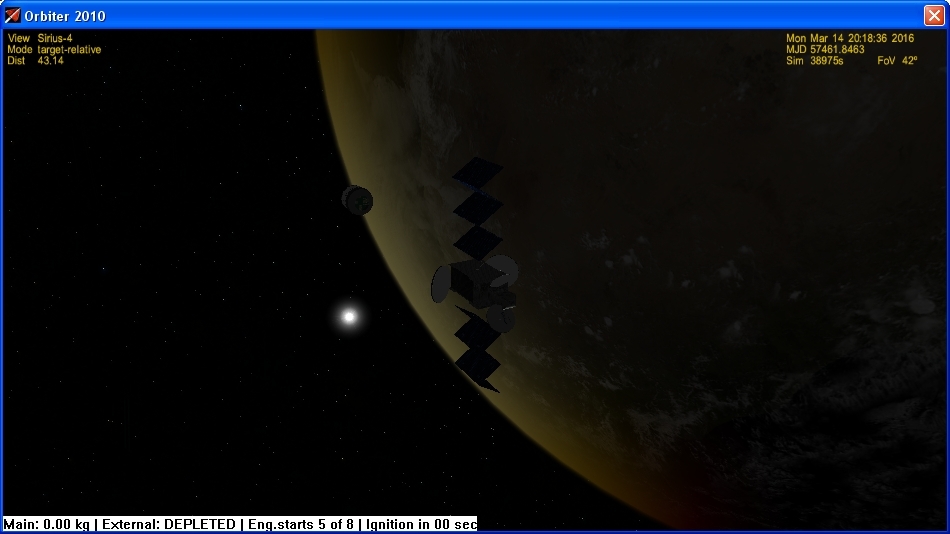
Tuesday came. The illiterate and biased journalists wrote a complete nonsense about us, this disgrace still hangs on the Echo of Moscow.

And we virtually overcame the first megameters to Mars, and, if you look at the trajectory displays, then, surprisingly, we went on a good migratory trajectory.

Flight to mars
The orbit turned out to be very good, with a correction of only ~ 300 m / s, which is nonsense for manual launch, I managed to reach the full-fledged route to Mars.

And he arrived at the goal on September 30th. The real "ExoMars" should reach the goal on October 19.


According to the latest information, ExoMars successfully flies along an excellent trajectory that did not require correction (thanks, Briz-M!), Some of the devices have already been checked, so far everything is standard. We wish him a happy journey, as well as long and fruitful work in the Martian orbit.
Source: https://habr.com/ru/post/391921/
All Articles